UNL-35
 Second Spanish Republic (1937-1939)
Second Spanish Republic (1937-1939)
Light Armored Car – 120-200 built
The Spanish FAI/BA-20
The UNL-35 was perhaps the most mass-produced armored vehicle in Spain during the 1936-1939 Civil War. Built by Unión Naval de Levante, it was essentially a better copy of the Soviet BA-20, owing to its use of a truck chassis, as opposed to a saloon car. It is sometimes suggested that the UNL-35 is a Spanish copy of the FAI, which makes sense, as FAIs were actually sent to Spain. However, the UNL-35 seems to have more in common with the BA-20. The easiest way to tell them apart from a BA-20 is the four-piece wheel guards, the differently-shaped turret, and the Spanish scenery in the background of photos. Sturdy, reliable, sensible, the UNL-35 was kept in service with the Spanish army until retirement in 1957, but also may have seen service in WWII with the French and even the Germans.Context: Soviets in Spain
The Soviet Union had a major interest in Spain before the Civil War even began. The possibility of securing a satellite state in Western Europe would be excellent for the Comintern. After the overthrowing of the monarchy in 1931, the radical left political parties such as the PSOE (Spanish Socialist Workers Party), PCE (Spanish Communist Party), and unions such as the UGT (General Workers Union), and Anarchist CNT (National Confederation of Labor) were able to secure power.Knowing that the balance between traditional, Catholic Spain and modern, socialist Spain could be tipped one way or the other at any moment, the USSR attempted to influence the situation. After successive failed governments, and several elections, 1931-1936, whereby power swung from the far left to the far right, Civil War inevitably broke out between Republican forces (a conglomerate of left-wing parties and organizations) and the Nationalist forces (a similar conglomerate of traditionalist forces such as CEDA, Carlists, and the Falange, supported by much of the armed forces and Guardia Civil).
The Republicans desperately needed arms, as the Nationalists controlled half of available rifles, and two-thirds of the machine guns and artillery pieces, thus giving them the upper hand. Worse still, due to an agreement of non-intervention from France and Britain, the only viable option was to buy from the Soviet Union (although small shipments were secured from France, it was far from sufficient). By this time, the Soviets were less concerned about receiving a new satellite state as much as they were about stopping the spread of Fascism. By spending some of its gold reserves to pay for the aid, it is estimated that Spain received 242 aircraft, 703 artillery pieces, 731 tanks, 300 armored cars, 15,000 machine guns, 500,000 rifles, and 30,000 sub-machine guns from both Soviet and Comintern sources, as well as over 2000 Soviet personnel, mainly consisting of pilots and tank crews, but engineers and military advisers, too.
Design process
The UNL-35 was built in the naval factories of the Unión Naval de Levante, Valencia, eastern Spain. It was certainly a reflection of Soviet influence – the factory was managed by a Soviet advisory engineer, Polkovnik Nikolai Alimov, in conjunction with Spanish engineers and technicians. It was, essentially, a Spanish copy of the BA-20. The BA-20 used the GAZ-M1 saloon car as its basis, whereas the UNL-35 used the more reliable and tougher ZIS-5 three-ton truck (although other trucks were known to be used in small series such as the GAZ-AA, an unknown Chevrolet, and an unknown British truck, as proven by the right-hand driving), therefore making it a technically superior vehicle.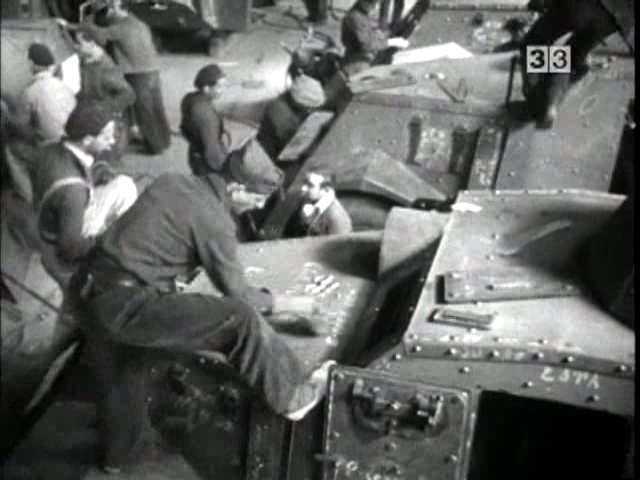
Construction of a UNL-35. Still from “Roig I Negre”, 2006. (See sources)
Construction of a UNL-35
Construction of a UNL-35. Still from “Roig I Negre”, 2006. (See sources) A wooden base was used on the bottom of the vehicle, and 8-10 mm (0.31-0.39 in) sloped plates were welded and riveted, which made it a much sturdier design. These steel plates were built in another factory, Altos Hornos del Mediterráneo, in Sagunto, Valencia, which was being supervised by another Soviet engineer, A. Vorobyov. Munitions, possibly for the vehicles themselves, were built in the same factory as the vehicle itself, the complex being split into four separate production lines.There were two large access doors on either side of the hull for the crew. The engine compartment, too, featured armor plating with small access shutters at the front and sides, but the exact shape varied depending on the exact model. The tires were replaced with airless tires, thus meaning that they could not get a flat or be shot out by small arms fire. There was a ball-mounted machine gun for the co-driver to operate, as well as a similar one fitted in the turret, although these weapons were removable and are not always seen in photos.
Some minor differences between UNL-35s exist, and this tends to do with which truck was used as the basis. The biggest visible difference is one British truck-based UNL-35, which has the driver and co-driver positions swapped. Other differences include headlights being mounted on the side of the engine compartment or on top of mudguards, a small armor plate above the engine ignition crank (just below the front engine shutters), a small step fastened to the hull, just below the side-door, and the engine access hatch shapes (some are rounded rectangular, some are simple rectangles).
Various machine guns were fitted to the UNL-35 including the DP-28 and MG08. Photos are not clear enough to positively identify all machine guns, but it is also possible, if not probable, that they used MG34s, Hotchkiss Mle 1914s, and Maxim M1910s.
Production started in early 1937, with approximately five vehicles built each month. By spring, 1938, the UNL factories were evacuated and production moved to Elda and Pertel in Alicante, south of Valencia. Final production of the UNL-35 ended in 1939. At least one UNL-35 is on display at the Museo de Medios Acorzados, Madrid, but is reportedly a replica. Another replica has also been built using original blueprints, featuring Nationalist colors, and is on sale for 16,000 Euros.
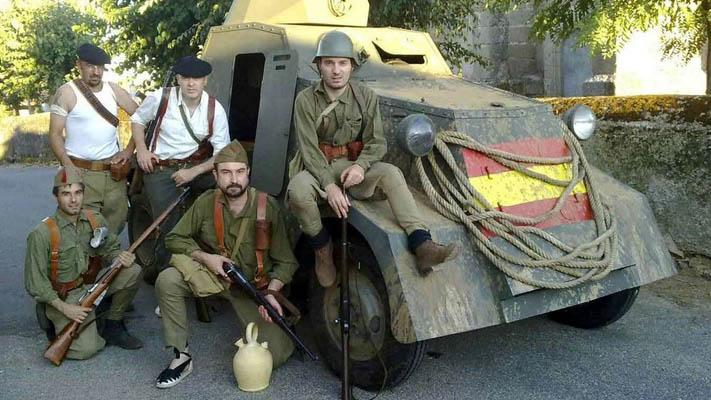
In Combat
Specific details on the UNL-35’s combat are seemingly unavailable. Based on what is known about the vehicle’s specifications, it would not be unreasonable to make speculative comments on how it would fare. Its 8-10 mm (0.31-0.39 in) of armor seems rather poor, but it is actually in line with interwar armored vehicle standards – the Soviet BA-20 had a maximum of 10 mm, the British Lanchester 6×4 had up to 9 mm (0.35 in), the Italian CV-33 had up to 10 mm, the Polish wz.34 had up to 10 mm, and even the German Panzer I Ausf.A had a mere 13 mm (0.51 in). With its rivet and weld construction, it was a sturdy machine, unlike Soviet vehicles which suffered from poor quality welds, or the drawbacks of purely riveted designs. Riveted designs are easy to produce, but heavy machine gun fire could cause spalling and kill the crew. Although the rivet and weld design would mean that the vehicle could probably be very easily repaired and pressed into service again, as it would not be totally ruined. It would, crucially, have no trouble withstanding small arms fire and light shrapnel from hand grenades, although raids from the German Legion Condor would be, without question, fatal.The UNL-35 is not without its problems. According to Zaloga in “Spanish Civil War Tanks: The Proving Ground for Blitzkrieg“, protected trucks made in Republican areas, whilst used daringly, were overburdened by the armor plating, and the engines would often overheat, or the suspension would buckle. Whilst more or less referring to the improvised trucks and the inferior Bilbao armored car, it appears as though the UNL-35 may have suffered from the same problems. Many photos show the UNL-35 with the front and side engine access compartments open.
It is more than plausible that this is to stop the engine overheating, which would be a serious problem during Spanish summer offensives, especially in the warmer climate of central Spain (which is generally the hotter area of Spain) and the Mediterranean coast (which occasionally sees high temperatures due to North African winds). To make matters worse, the ZIS-5 (which appears to have been the most commonly used truck basis) had a water-cooled engine, which could seriously inconvenience a depleted unit of UNL-35s.
A further problem is highlighted in that it had a very narrow wheel base, but the vehicle itself was rather tall. The UNL-35 was clearly not the most stable vehicle, and was probably road-bound, much like the BA-20, due to its very high ground pressure. UNL-35s built on the ZIS-5 truck appear to have dual-wheels, but others, such as the one based on the British truck, have very thin single wheels, which would make the vehicle very precarious.
The UNL-35 saw action on all fronts, except for the north, as by April 14th, 1938, the northern cities of Barcelona, Tarragona, and Gerona were isolated from Valencia. The Nationalists had pushed through to the Mediterranean Sea during the Aragon Offensive, which effectively split the Republican-controlled zone in half. This meant that it would be logistically impossibly to send any UNL-35s to the northern front.
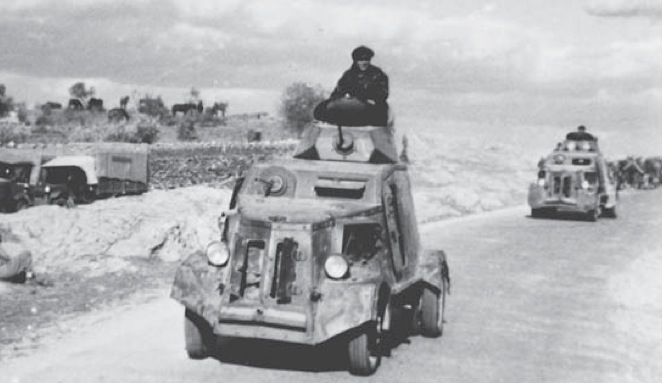
A pair of captured UNL-35s in service with the Nationalists. The engine hatches are probably open to stop the engine from overheating.
It is reported that they first saw service in the May Events in Barcelona, 1937, in support of the Assault Guards from Valencia, where Republican factions fought one another for control of Catalonia. The UNL-35 would also see service in the Battle of Brunete (6th July – 25th July 1937), and at Segovia, Teruel, and Belchite.
After the Civil War, the remaining UNL-35s supposedly changed hands quite often. Some vehicles were captured and put into use by the Nationalists and Spanish Army well until 1957.
It is reported that some UNL-35s were used French cavalry units against German forces in 1940 at Dunkirk along with some AAC-1937s (which was a copy of the BAI in the same way that the UNL-35 was a copy of the BA-20). They were confiscated during the Republican retreat into France – one photo reportedly shows four in France, and another possibly shows some behind an AAC-1937 with a French Gendarme posing near them, meaning that at least four were known to be in France. Due to the fall of Barcelona during the Catalonia Offensive, in early February, 1939, Spanish refugees, including soldiers, marched to France.
By the 5th, Republican soldiers were allowed to cross over, but it was sealed by Nationalist forces on the 9th. There is no apparent information available on what happened to any weapons brought across the border, if they were allowed at all, but it is likely that they were all confiscated. Whether or not they were actually pressed into service with France is a different matter.
According to “Tout les blindés de l’armée française 1914-1940“, at least twenty-two UNL-35s were seized and were given to the Minister of Colonies, Georges Mandel, in April 1939, although their final fate is unknown.
German forces also supposedly deployed captured French UNL-35s and AAC-1937s into service at the Balkans, Eastern Front. Photos exist of the AAC-1937s in German service, but not of the UNL-35, although markings would probably be similar.
UNL-34 specifications | |
| Dimensions | 3.7 x 1.9 x 2.3 m (12ft2x6ft3x7ft7) |
| Total weight, battle ready | 2.3 tons |
| Crew | 3 (driver, co-driver, commander) |
| Propulsion | ZiS-16, 6 cyl, petrol, 73 hp |
| Suspension | Leaf spings |
| Speed (road) | 50 km/h (30 mph)|
| Range | 230 km (145 mi) |
| Armament | Various machine guns (see notes) |
| Armor | 8-10 mm (0.31-0.39 in) |
| Total production | 120-200 |
Sources, Links, and more information
“Las Armas de la Guerra Civil: El Primer Estudio Global y Sistematico del Armamento Empleado por Ambos Contendientes” by José María Manrique García and Lucas Molina Franco“Spanish Civil War Tanks: The Proving Ground for Blitzkrieg” by Steven J. Zaloga
“Tout les blindés de l’armée française 1914-1940” by Francois Vauvillier
“Comintern and the Spanish Civil War” by Svetlana Pozharskaya
“The Battle for Spain, The Spanish Civil War 1936-1939” by Anthony Beevor
“A Short History of: The Spanish Civil War” by Julian Casanova
“The Spanish Civil War” by Stanley G. Payne
“Roig I Negre”, (Spanish / Catalan) 2006, a TV3C documentary on Anarchism in Catalonia and Aragón.
Panzornot.net (Provides many stills from “Roig I Negre”)
The UNL-35 on Wikipedia (Spanish)
Regimiento-numancia.es (Spanish) (Seemingly the ‘official’ website of a Regiment that used the UNL-35)
Miniarons.eu (Page available in English, Spanish, and Catalan) (Spanish scale model making company)
Network54 Forums
MundoGSM Forums (Spanish) (General forum discussion on Spanish Civil War armored cars)
Minecreek.info
Archive Taringa.net
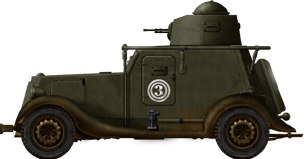
A Soviet BA-20 armored car, for comparison.
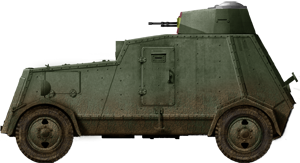
UNL-35 captured by the Nationalists, date unknown.
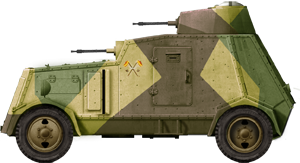
UNL-35 in Republican colors, 2nd Division of Armored Cars, Barcelona, 1937.
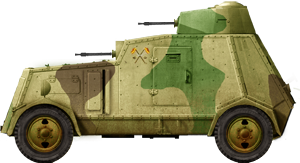
UNL-35 in Republican colors, 1937.
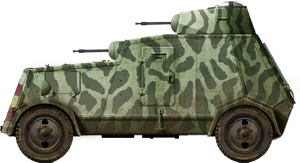
Nationalist camouflaged UNL-35 in 1939.
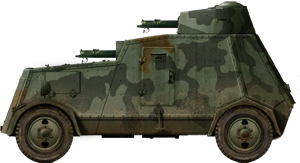
UNL-35 of the Ejercito Popular Republicano, Fábrica 22.

Camouflaged UNL-35, unknown date. Possibly outside the UNL factories waiting to be armed.
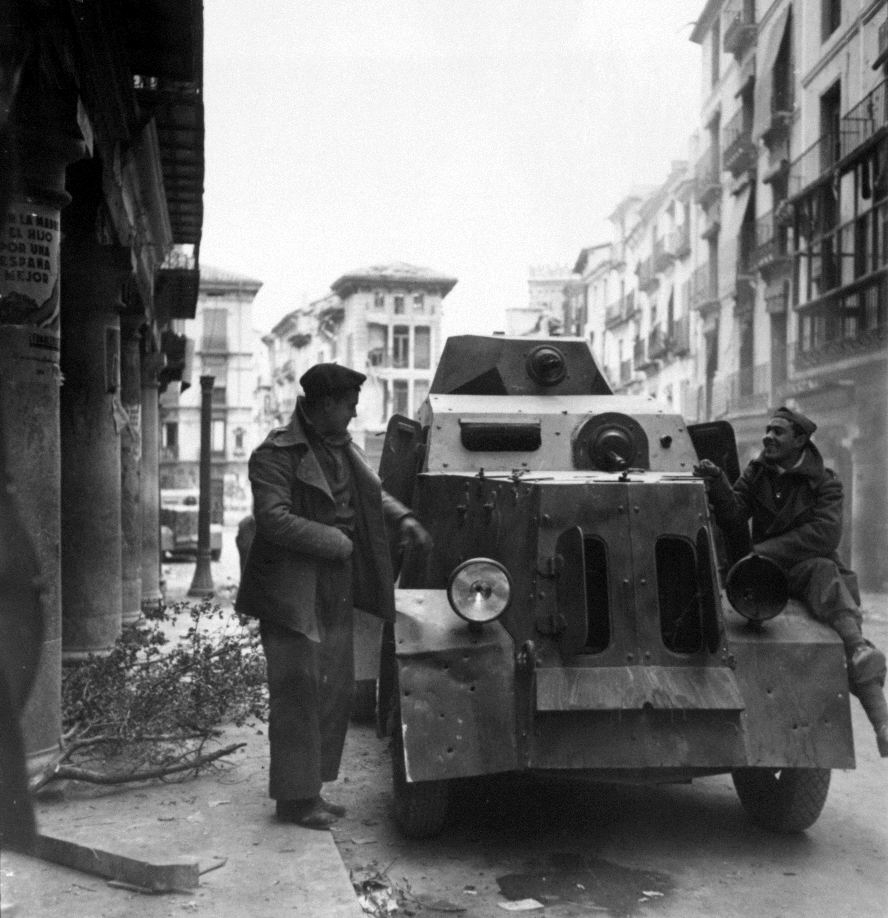
A UNL-35 based on a British truck, hence the driver’s and co-driver’s positions being swapped. Small arms fire has left many dents in the mudguards, and smashed the glass of the right headlight.
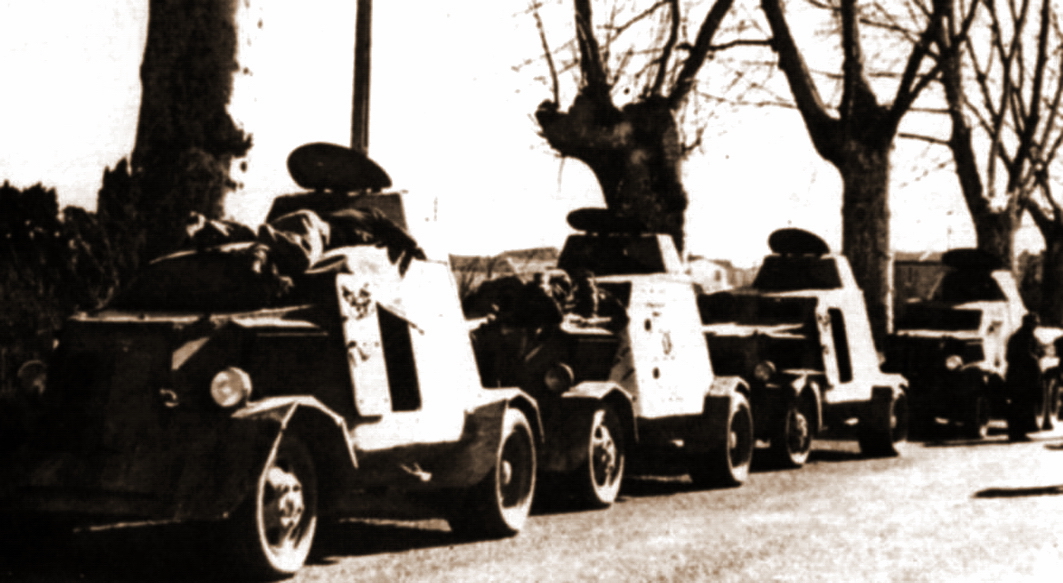
A column of UNL-35s after crossing the French border.
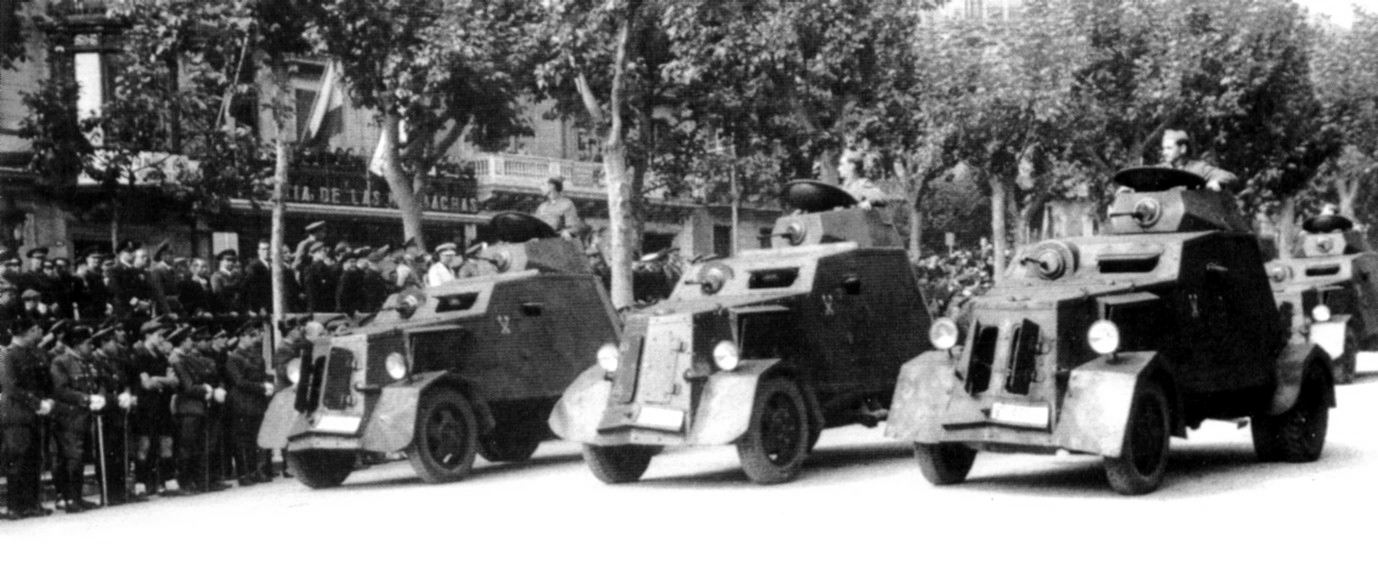
Several UNL-35s on parade in Barcelona, in service with the Cavalry Regiment “Numancia”.
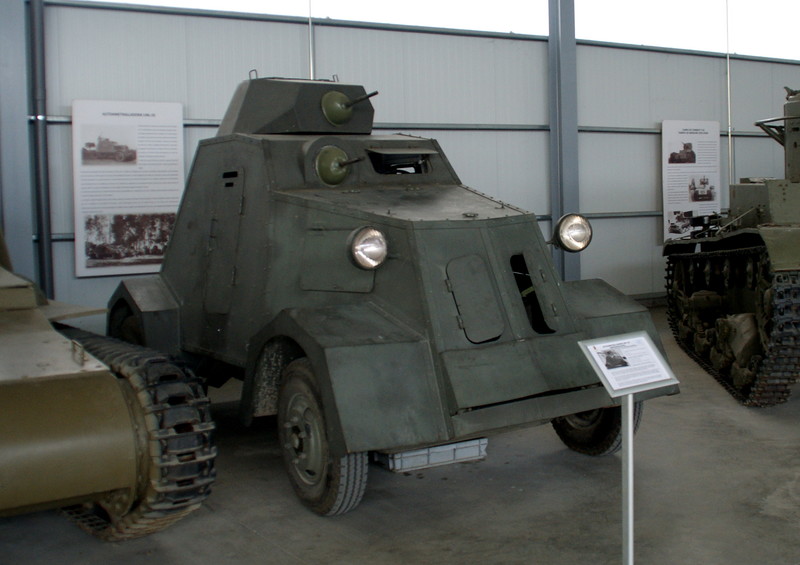
A replica UNL-35 on display at the Museo de Medios Acorzados, Madrid.
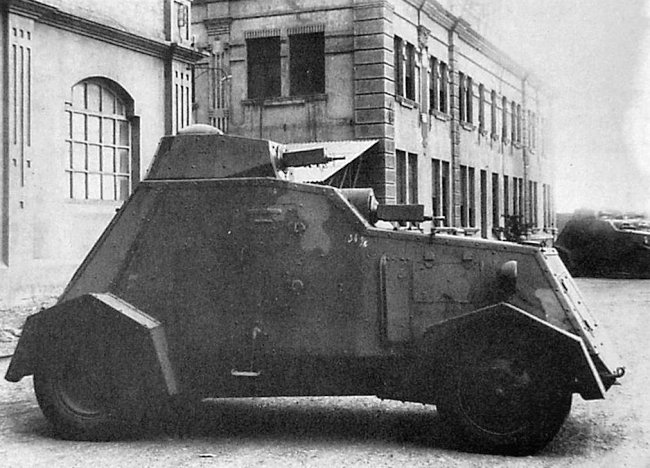
Sideview of a camouflaged UNL-35.
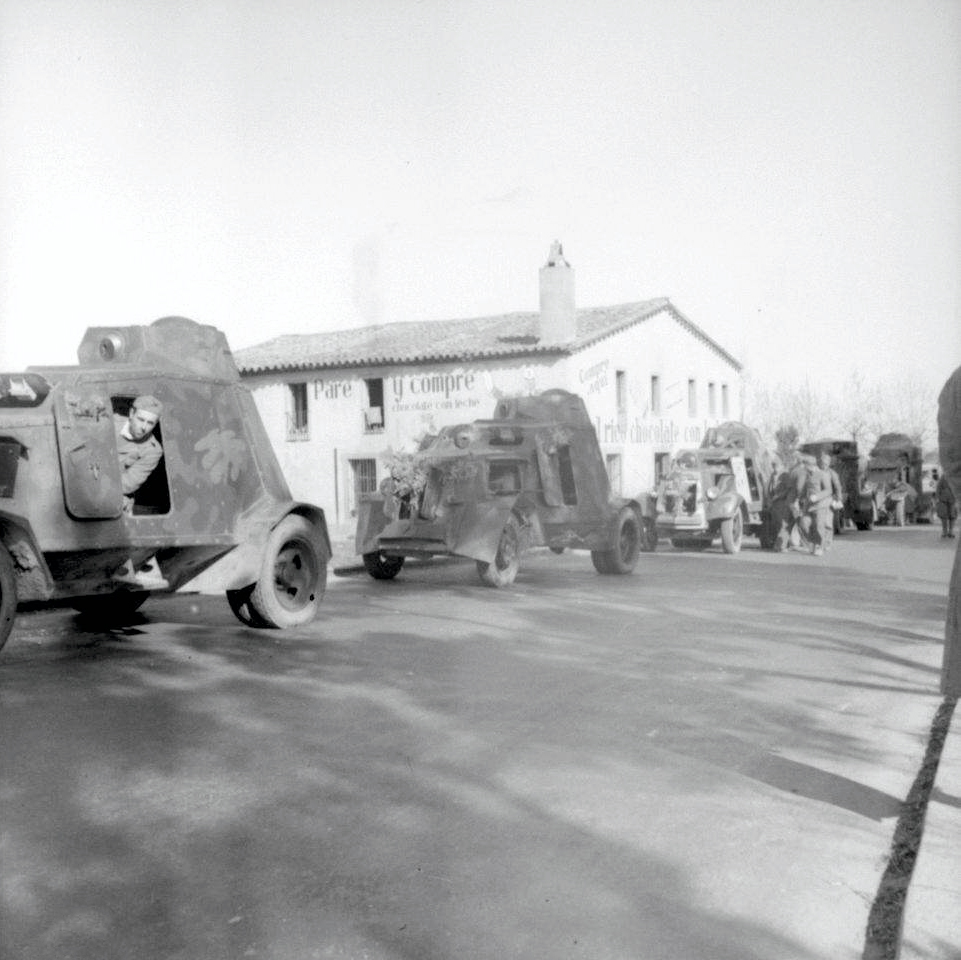
Column of UNL-35s. Probably Republican service.
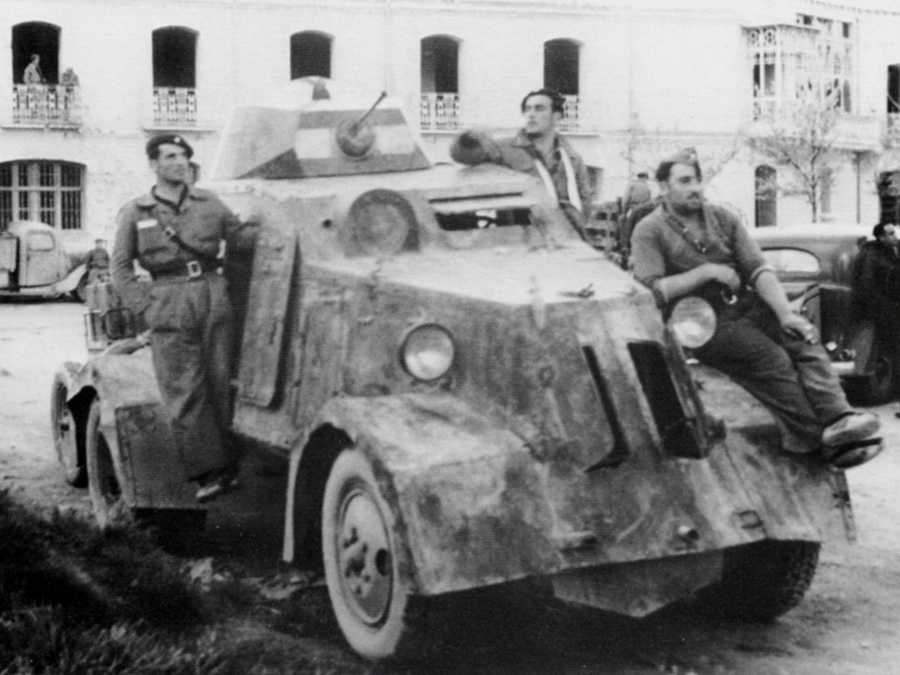
UNL-35 in Nationalist service. This appears to be a 6×4, but it seems as though a spare wheel or some kind of oil drum is just behind the rear wheel, thus giving the illusion of 6×4.
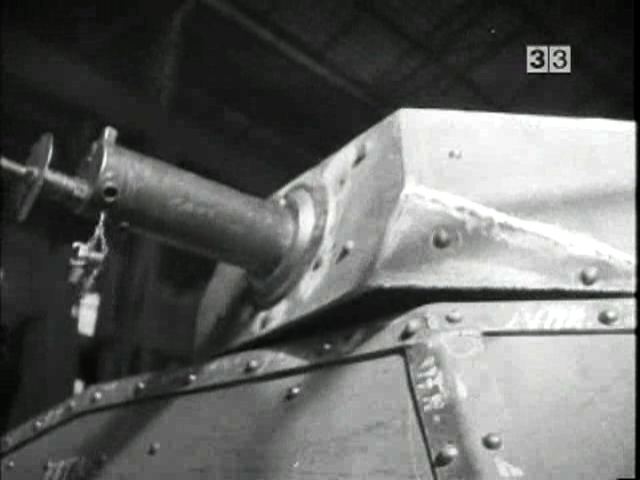
A UNL-35 being prepared at the factory. It appears to have a water-cooled MG08 installed in the turret.
Video from “Roig I Negre” of some UNL-35s being prepared.

Camouflaged UNL-35, unknown date. Possibly outside the UNL factories waiting to be armed.

A UNL-35 based on a British truck, hence the driver’s and co-driver’s positions being swapped. Small arms fire has left many dents in the mudguards, and smashed the glass of the right headlight.
 A column of UNL-35s after crossing the French border.
A column of UNL-35s after crossing the French border. A column of UNL-35s after crossing the French border.

Several UNL-35s on parade in Barcelona, in service with the Cavalry Regiment “Numancia”.

A replica UNL-35 on display at the Museo de Medios Acorzados, Madrid.

Sideview of a camouflaged UNL-35.

Column of UNL-35s. Probably Republican service

UNL-35 in Nationalist service. This appears to be a 6×4, but it seems as though a spare wheel or some kind of oil drum is just behind the rear wheel, thus giving the illusion of 6×4.

A UNL-35 being prepared at the factory. It appears to have a water-cooled MG08 installed in the turret.
Comments
LordWaka says:February 16, 2016 at 10:35 pm
Hello,
I can confirm there were several UNL 35 in french service. According to “Tout les blindés de l’armée française 1914-1940”:
“Pas moins de 22 automitrailleuses UNL 35 sur châssis Ford, dites “Ford”, probablement la totalité du lot saisi, seront mises en avril 1939 à la disposition du ministère des colonies. Leur sort final demeure inconnu”.
“Nothing less than 22 armored cars UNL 35 on Ford chassis, called “Ford”, most likely the totality of the seized vehicle, would be given to the minister of colonies during April 1939. Their final fate is unknow”.
France also seized vehicles with six-wheels on Chevrolet basis, and re-used them during June 1940, in experienced unit of the DLM (French armored divisions), re-armed with MAC 31 machine-guns, but these are not UNL-35.
Bigger armored trucks were also captured: A least a Toras 6, and two Hispano-Suiza 3T6. I have no further informations about these.
And last but not least, there were also T-26 and BT-5 tanks seized. Ten were given the new single spanish government during May 1939, the others were stocked in the “Entrepôt de réserve générale de Gien” and would finally destroyed during anti-tanks grenades tests. None were still in service by June 1940.
TEadmin says:
February 16, 2016 at 10:43 pm
Hi,
that’s a precious addition to this article, thank you so much !
Indeed apart of photos with a gendarme with vehicles presumably seized we were unsure of their fate;
It would be nice to find one day photos of at least one of these in French colonial service to create an illustration…
LordWaka says:
February 16, 2016 at 11:18 pm
I actually have a picture in my book, i’l scan it when I will be able to, but it’s only a photo of the stockage of those armored cars, not really in service. (However, I have a photo of the 6×6 vehicle on Chevrolet basis, aswell as a nice profile, if you’re interested)
Willkerrs says:
February 20, 2016 at 12:56 pm
I would certainly be interested to see all the information that you have!

WW2 Tanks




























WW2 tanks posters

All Tiger tanks liveries.

Panther liveries and variants

WW2 Armour - All tanks











Tanks aces and single tanks series

Find more there

Museums, Movies, Books & Games
The Tanks and Armor in pop culture
Tanks and armored vehicles in general are only really grasped when seen first person: The mass, the scale, it's all there. Explore also the way tanks were covered in the movie industry, in books and in video games.Movies:
Best tanks movie on warhistoryonline.com
On imdb.com
On bestsimilar.com/
miltours.com
liveabout.com/
watchmojo.com
Video Games:
pcgamesn.com
historyhit.com
levvvel.com
vg247.com/best-tank-games
mmobomb.com/
alienwarearena.com
